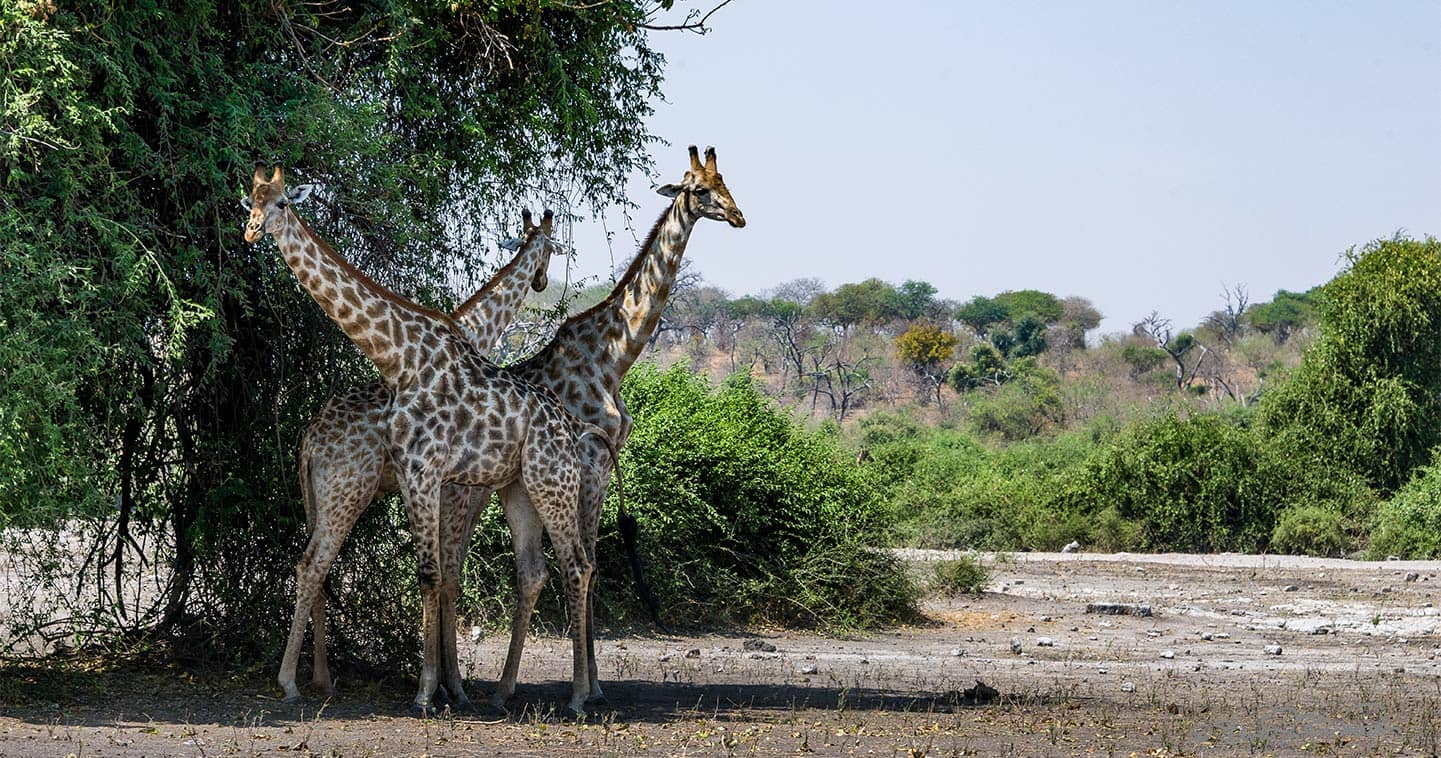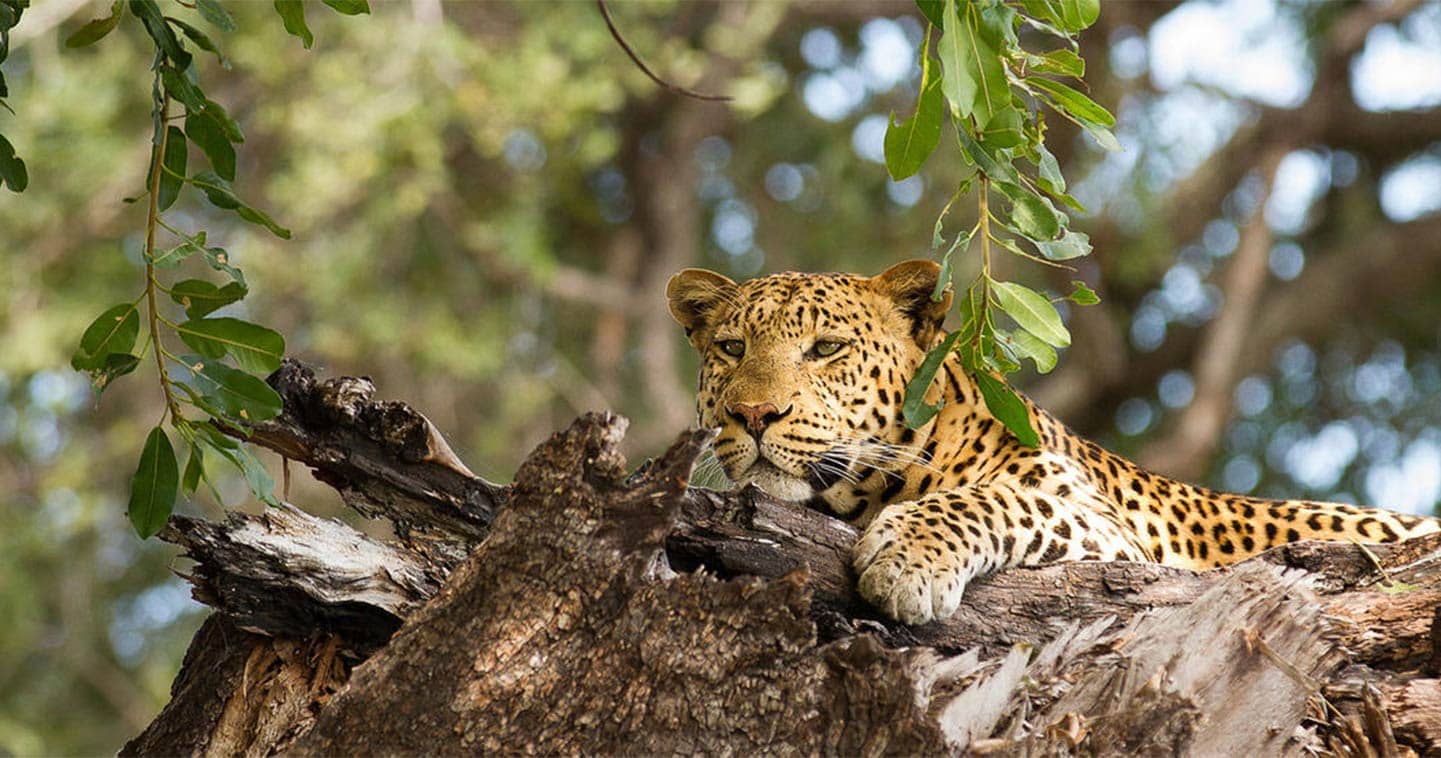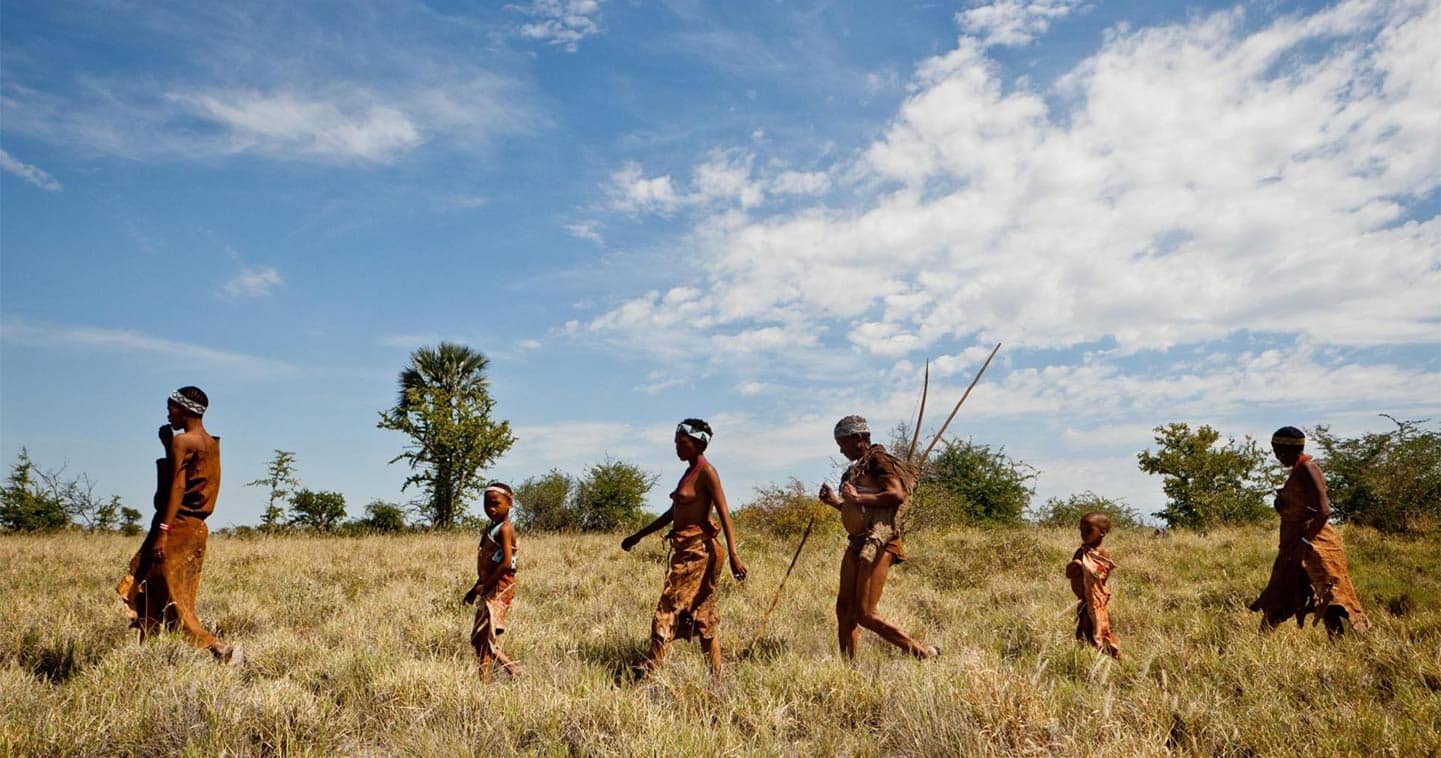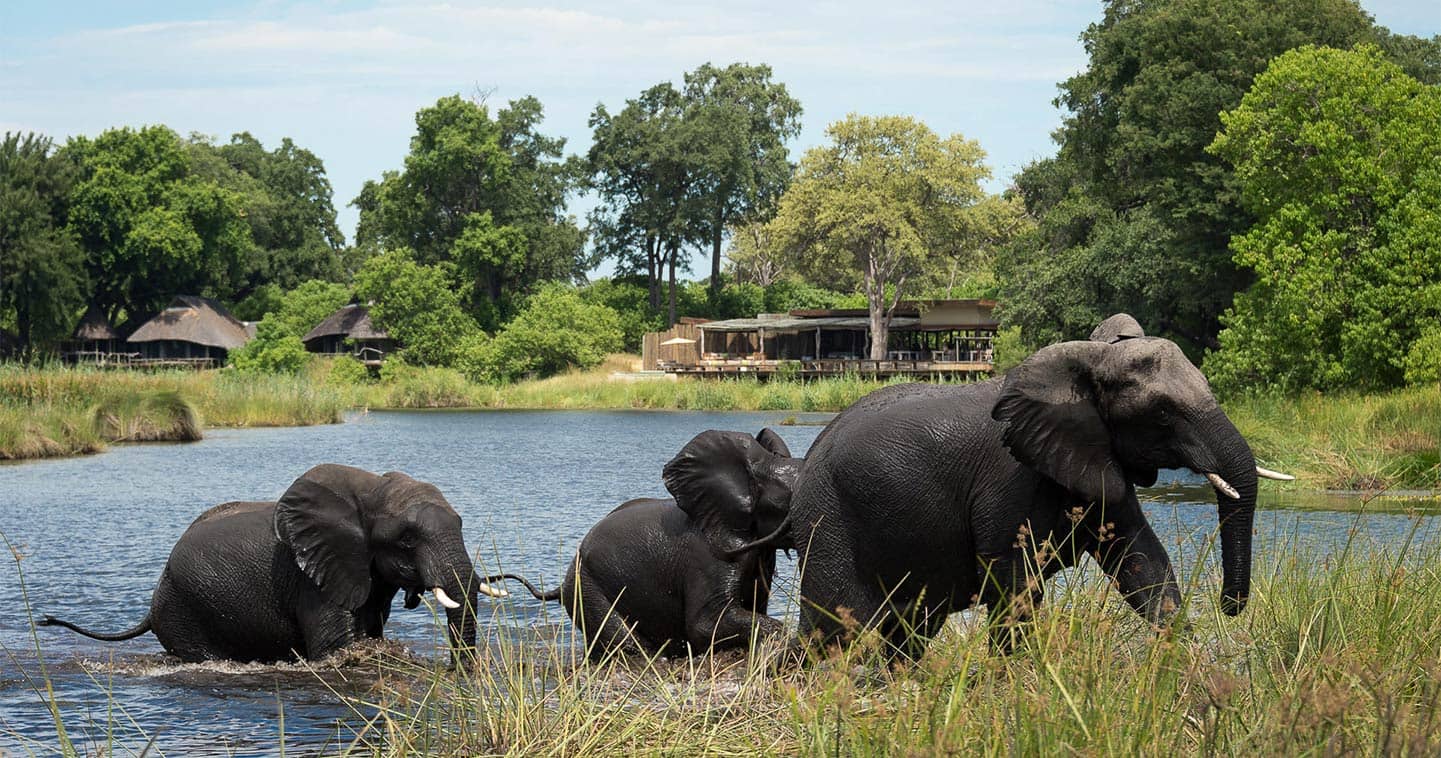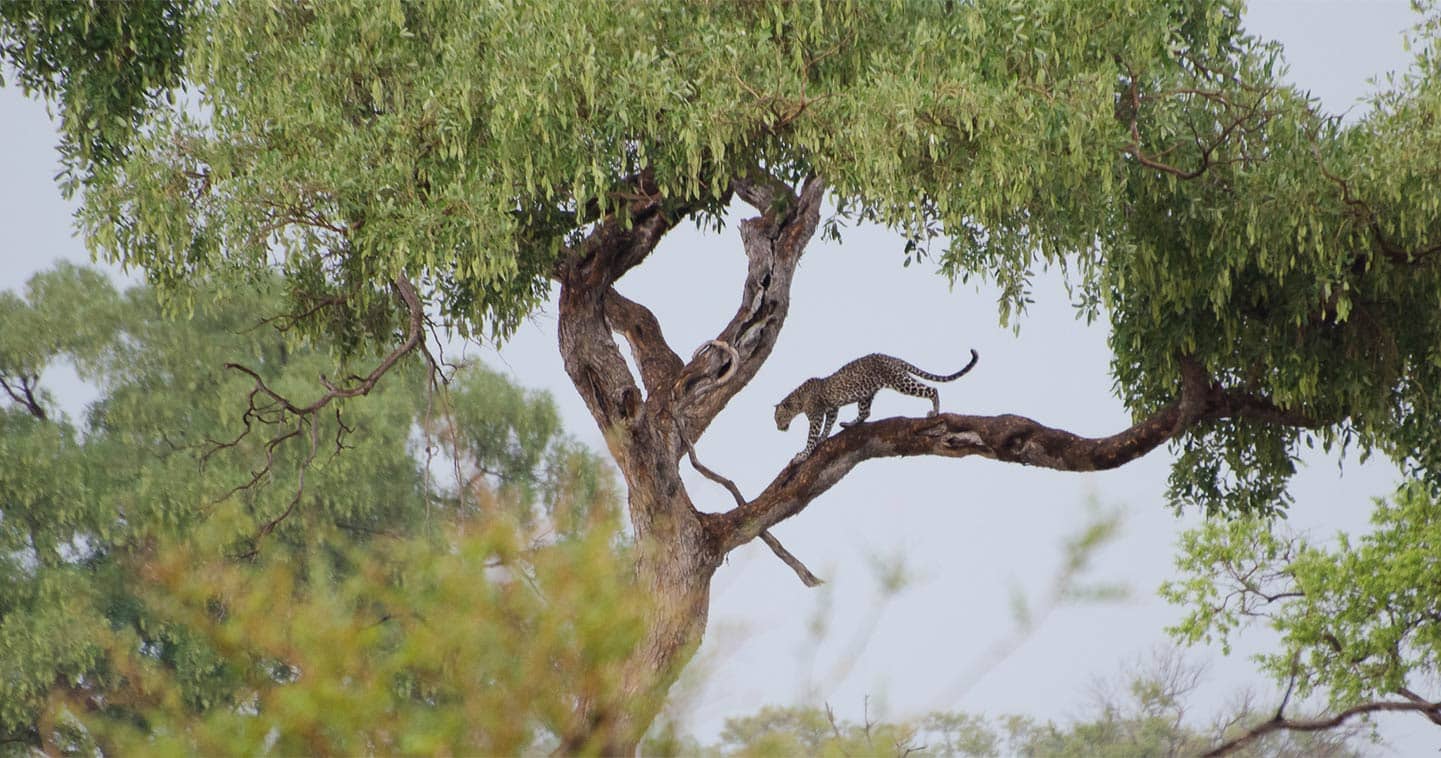About Chobe National Park
Welcome to one of the great wildlife destinations of Africa
When you visit the Chobe National Park, you will never forget the first glimpse of the dazzling, deep blue Chobe River, as it winds its way through sandy terrain, small towns, lush floodplains, dense forests of cathedral mopane trees, and endless broadleaf woodlands. The park is named after this majestic river that protects 10.700 km² of the northern Kalahari desert, providing ensuing wilderness and a game density that is steadily remarkable.
A place for everyone - Chobe National Park
Famed for its massive elephant populations, big herds of buffalo (matched only by some large lion prides) and incredible birdlife, Chobe National Park will leave an everlasting memory. Where else can you find such an amazing riverfront, with bustling wildlife, undisturbed predators, heavenly landscapes and tranquil lodges? The most accessible area of the park is the Chobe Riverfront, this is also where you will find the largest concentration of wildlife. For a more predator-rich area: head off to Linyanti Marshes. Or nourish your soul in the remote Savuti area. Wherever you go in this park, wildlife encounters are plentiful and all of Chobe feels like true wilderness. It is a place that can be enjoyed by everyone: couples, families and seasoned Africa travelers.
We will explain more about the different areas below. But first, a little bit about the history of this special place.
History of Chobe National Park
The original inhabitants of Chobe were the Bushmen, followed by the – impressively named – Hambukushu, Bayei and Basubiya. In the 1850s, locals saw explorer David Livingstone passing through the area on his way to the Victoria Falls (a little over an hour away from Chobe National Park), and some big-game hunters seeking trophies and ivory. Luckily, for all the flora and fauna of this unique land, the area was first protected as a game reserve in 1961 and proclaimed as national park in 1968.
Up to this day the game-density remains exceptional. You will be forced to halt frequently because a parade of wildlife wants to pass by. Much better than stopping for a red light in traffic, right? Moderating the number of visitors to the park keeps it from feeling ‘too busy’, adding to the remote and exclusive Chobe safari experience.
Flora and fauna: plenty of different areas in one park
Whenever you are close to the Chobe river, you will notice a broad variety of lush green bushes and trees. Away from water sources, the bushes get thicker and thorny, with a few open areas.
Although Chobe National Park is a wildlife paradise, trying to describe it as a whole would be a mistake. Chobe consists of many different smaller ecosystems, each with its own vibe, different vegetation and animal population. We will explain more about the three areas here, but will try to give you an overview of what the park is about first.
Wildlife in Chobe around the clock
You can encounter Chobe’s wildlife across the entire park. When the dry season begins, large herds of elephant and buffalo seek the permanent waters of the Chobe and Linyanti Rivers. Imagine thousands of them, coming sometimes all the way from Zimbabwe’s Hwange National Park. All year round, Chobe’s big game includes zebra, impala, baboon, blue wildebeest, kudu, giraffe, warthog and vervet monkey. Lions and the spotted hyena are very common; together they are the dominant predators, bringing you spectacular encounters with big buffalo herds. The riverfront is the hotspot to see hippo, crocodile and the slightly odd, leguvaan (the second longest lizard of Africa).
And, although seen less, the incredible cheetah, leopard and Africa’s rare wild dog roam the Chobe area frequently. Your guide will keep an eye out for these unique animals: seeing them in their natural environment is an unforgettable experience. If you are very lucky, you might even spot the rarely seen, white rhino. Reintroduced in Botswana in 2001, they are spreading gradually. So a wandering rhino might turn up!
Some Chobe safari lodges offer night drives on their own property; a very exciting and special trip. At night, the nocturnal animals emerge, such as bushbabies (adorable fluffy animals with big eyes), African wildcats and honey badgers.
A little extra about birds in Chobe
If there is one more thing that needs our special attention, it is the overwhelming birdlife in Chobe National Park. With over 450 birds species, there is no way we can list them all. So, here are a few highlights.
Hop on a boat for a river cruise and spot kingfishers, a high density of fish eagles and African skimmers. Stay on the lookout for bee-eaters, hamerkops and wire-tailed swallows. Also the borders of the islands and Chobe floodplains are where you want to be: storks, geese, herons and many, many plovers. Unusual, but definitely worth seeking are the rufous bellied and white-backed night herons, with their long beaks and elegant crest.
Overall, even if you are not a birdwatcher, these frolicking feather bundles will steal your heart, right from the moment they appear in front of your binoculars.
A Chobe family safari: biggest playground ever
Yes, planning a Chobe safari with the entire family can be challenging. But, if do it right, you and the little ones will have the experience of a lifetime. A few things to keep in mind: anticipation is a very important part of the overall trip. Especially if it is the first time your kid(s) will venture out of their comfort zone: talking about it and viewing pictures of the animals helps them prepare. What will they see? Maybe they want to make a checklist of cool animals they want to spot? Involve them in packing their suitcases too; if they feel a sense of responsibility, the trip will be more exciting.
Because the lodges in Chobe are all in the ‘true’ wilderness (unfenced), owners are quite strict with safety restrictions. Always check the minimum age permitted in the camp. Most camps also have a minimum age for game drives and guided bush walks.
Besides that, a safari is the perfect way to enhance family bonding (imagine reminiscing about the day under a star-studded sky, or waking up together with wildlife roaming in front of your suite), so start planning and let the anticipation begin!

